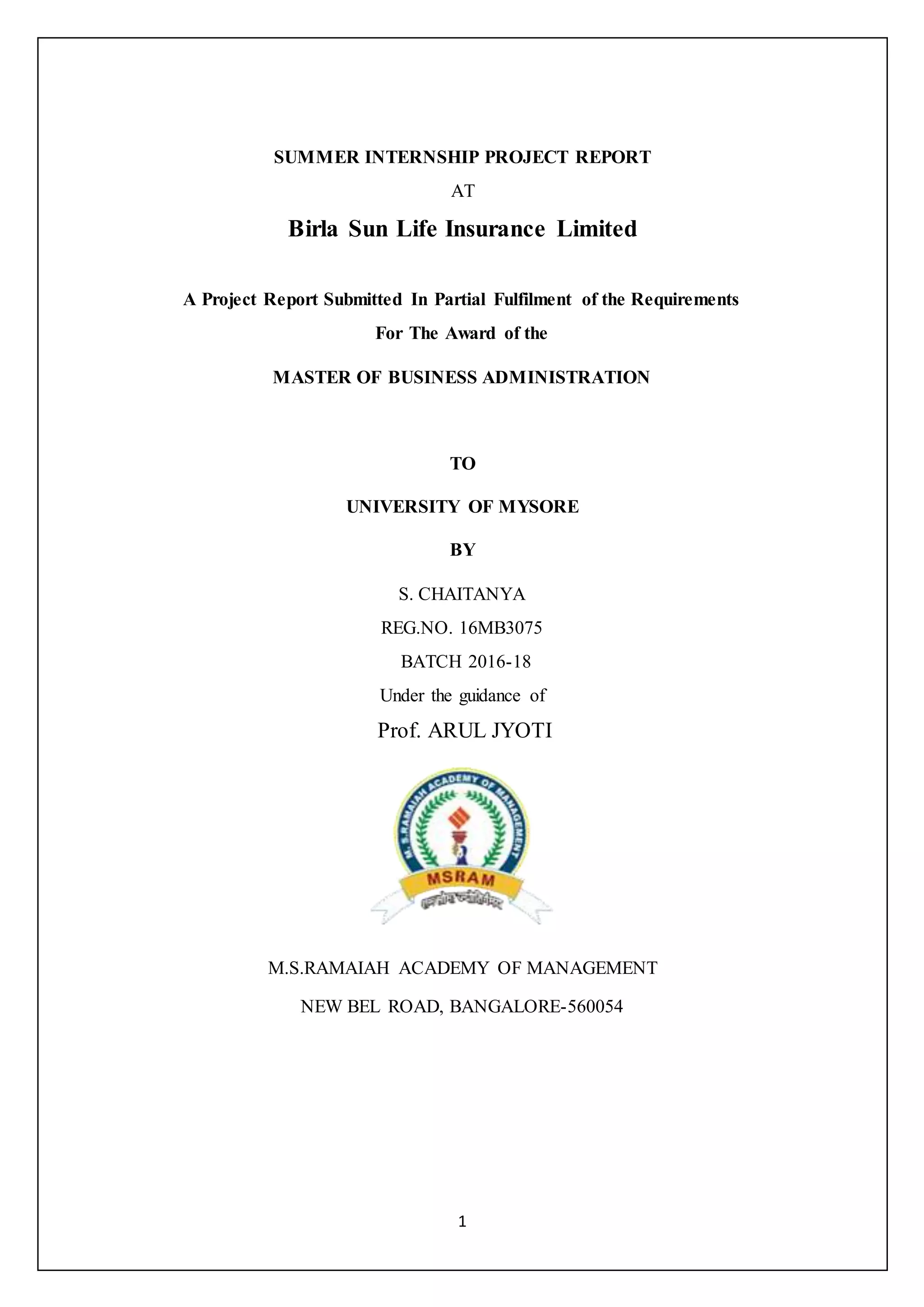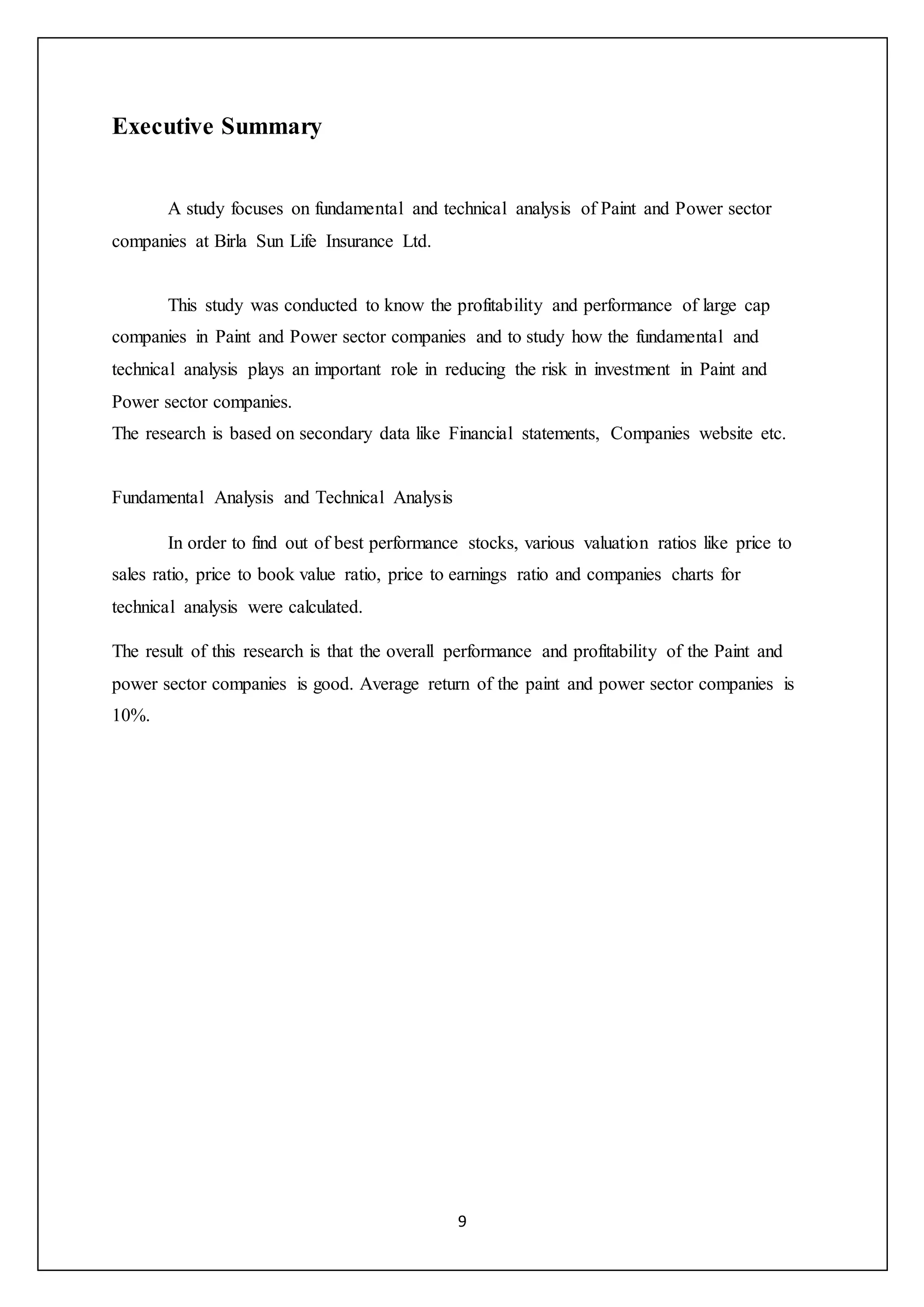This document is a summer internship project report by S. Chaitanya at Birla Sun Life Insurance Limited, submitted for the Master of Business Administration program at the University of Mysore. It includes certifications, acknowledgments, and a detailed table of contents outlining industry analysis, company analysis, research methodology, and findings. The report emphasizes the fundamental and technical analysis of the paint and power sector, highlighting significant insights into investments, profitability, and the performance of major companies in the respective sectors.
























































































